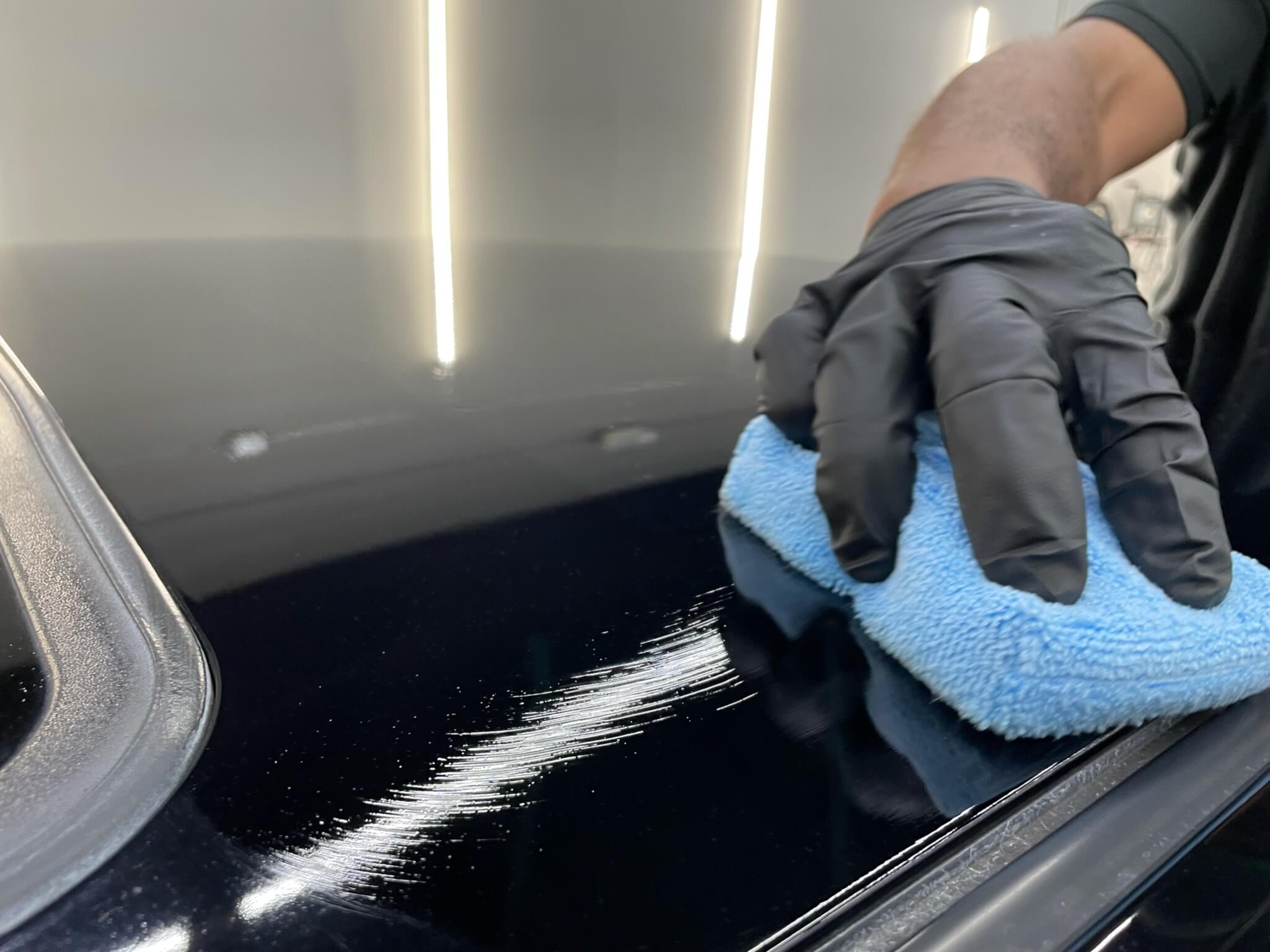Why Ceramic Coating Philadelphia Is the most effective Choice for Costs Paint Protection
Why Ceramic Coating Philadelphia Is the most effective Choice for Costs Paint Protection
Blog Article
Why Ceramic Finish Is the Ultimate Remedy for a Remarkable End Up
Ceramic coating has actually become a leading option for those looking for a remarkable surface for their automobiles, thanks to its impressive durability and protective attributes. This innovative liquid polymer not just bonds perfectly with factory paint but also supplies a formidable barrier versus common dangers such as scratches, UV rays, and toxic wastes. Additionally, its hydrophobic properties streamline maintenance while enhancing aesthetic charm. Nevertheless, comprehending just how this technology compares to standard techniques and exploring its application subtleties can disclose even more about its value. What factors really established ceramic covering apart?
What Is Ceramic Layer?

When used properly, ceramic finish develops a hydrophobic surface that repels water and dust, making it simpler to clean and preserve. Unlike conventional waxes or sealers, which generally provide short-lived protection, ceramic finishings can last for a number of years, depending upon the item top quality and application technique. The process of using ceramic covering calls for careful preparation, including complete cleaning and often paint adjustment, to ensure optimal bonding and efficiency.
Ceramic coverings are not restricted to automobile surface areas; they can likewise be utilized on numerous products, consisting of glass, steel, and plastics, supplying a flexible solution for boosting security. Generally, ceramic covering represents a substantial advancement in surface area defense technology, incorporating both visual and useful advantages for a large range of applications.
Advantages of Ceramic Covering
While lots of surface area security options exist, the benefits of ceramic finish stand out as a result of its unique buildings and lasting efficiency. One of the key benefits is its remarkable toughness. Ceramic Coating Philadelphia. Unlike traditional wax or sealers that need regular reapplication, ceramic coatings offer a resilient layer that can last for several years, substantially minimizing maintenance initiatives
One more significant advantage is boosted defense against ecological pollutants. Ceramic coverings create a hydrophobic surface area that wards off water, dirt, and numerous toxins, making it simpler to clean up. This feature not only preserves the car's look however also decreases the danger of deterioration and oxidation, especially in rough climate condition.
Furthermore, ceramic finishes supply superior resistance to UV rays, protecting against fading and deterioration of paint with time. This UV protection is crucial for preserving the visual value of surface areas and vehicles revealed to route sunlight.
Additionally, the glossy coating achieved with ceramic finish boosts the total aesthetic allure, offering surfaces a showroom-quality sparkle. In general, ceramic finishes stand for a significant advancement in surface area protection innovation, supplying enduring benefits that provide to both useful and aesthetic needs.
Exactly How It Works
Recognizing the science behind ceramic finishings exposes just how they offer such impressive defense and longevity. At its core, a ceramic finishing is a fluid polymer that chemically bonds with the automobile's factory paint.
The application procedure includes several steps, consisting of surface area preparation, which is vital to attaining ideal bond. Once applied, the layer undertakes a curing procedure, throughout which official statement it solidifies and develops a semi-permanent bond with the paint surface. This bond is what distinguishes ceramic finishes from traditional waxes and sealants, offering a longer-lasting safety obstacle that can withstand for many years.
Moreover, the thickness of the covering can boost its safety high qualities, making sure that it can endure severe conditions. Ultimately, the science of ceramic layers combines innovative materials with ingenious application strategies to deliver an exceptional level of defense and aesthetic improvement for vehicles.
Comparison With Standard Techniques
The benefits of ceramic coverings come to be especially noticeable when contrasted to conventional paint defense methods such as waxes and sealers. While waxes supply a short-term luster, typically lasting a few weeks to a number of months, ceramic coatings give a resilient safety layer that can endure for a number of years. This resilience considerably decreases the frequency of reapplication, making ceramic layers a more cost-effective service in time.
Additionally, conventional methods typically require extensive preparation and numerous applications to accomplish a sufficient degree of protection. On the other hand, ceramic coverings bond at a molecular degree with the lorry's surface area, producing a robust guard against environmental impurities like UV rays, acid rainfall, and road salts. This bond improves the automobile's resistance to scrapes and swirl marks, which prevail with conventional waxes and sealers.
Furthermore, the hydrophobic residential properties of ceramic layers drive away water and dust, causing much easier cleaning and upkeep. On the other hand, wax and sealant-treated surface areas can bring in grime, necessitating even more frequent washing - Ceramic Coating Philadelphia. Overall, ceramic useful link finishings not only give exceptional defense yet additionally deliver a more long-lasting and visually enticing surface, developing them as the favored selection for discerning automobile owners
Application and Maintenance Tips

Using a foam applicator, apply the covering in little areas, following the supplier's standards concerning density and overlap. Permit enough treating time between layers, generally 1 day, to ensure proper bonding. After application, it More hints is critical to prevent direct exposure to water or extreme elements for a minimum of a week to allow the layer to completely heal.
For maintenance, clean the vehicle regularly with pH-balanced soaps and avoid abrasive products. Touchless automobile washes are suggested to lessen damaging. Furthermore, utilizing a ceramic upkeep spray can enhance the finishing's hydrophobic residential properties and longevity. Normal assessments for any kind of indicators of wear will assist maintain the finishing's integrity and preserve that excellent finish.
Final Thought
In verdict, ceramic coating arises as an exceptional choice for attaining a perfect auto surface. By creating a durable bond with manufacturing facility paint, ceramic finish effectively guards against scrapes, UV rays, and environmental impurities.

Report this page